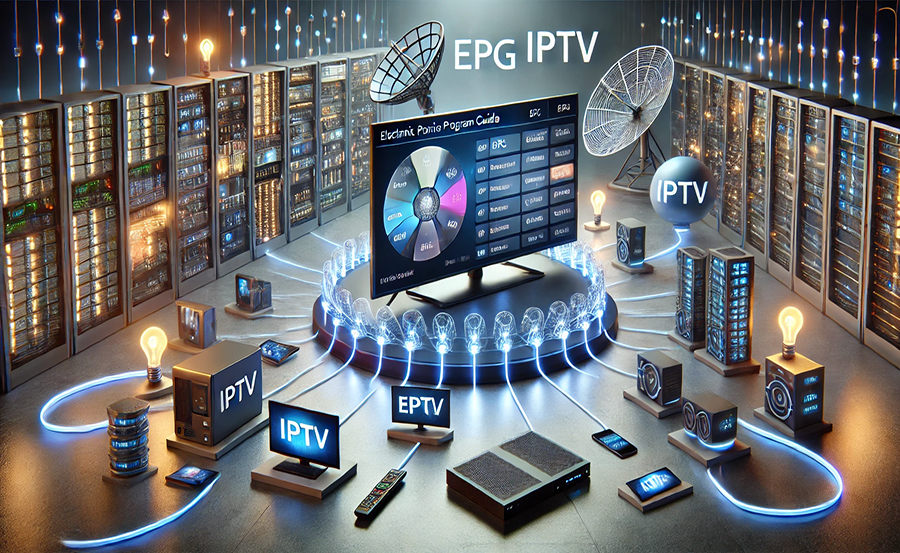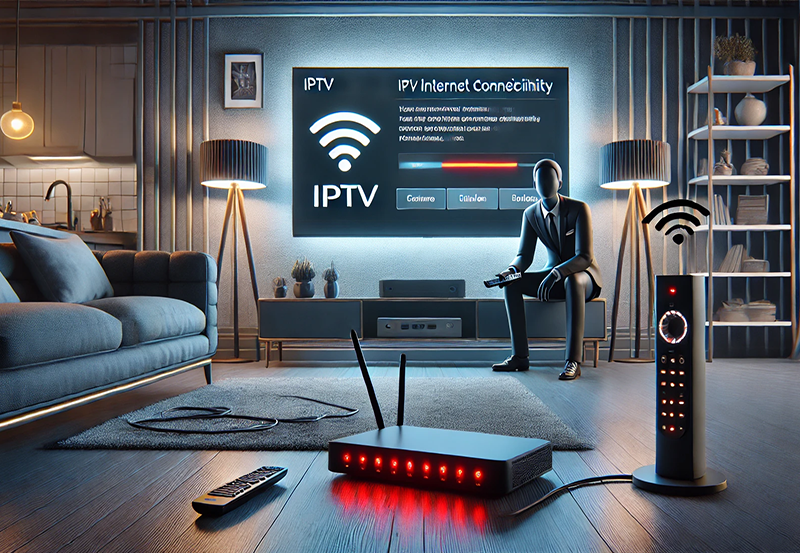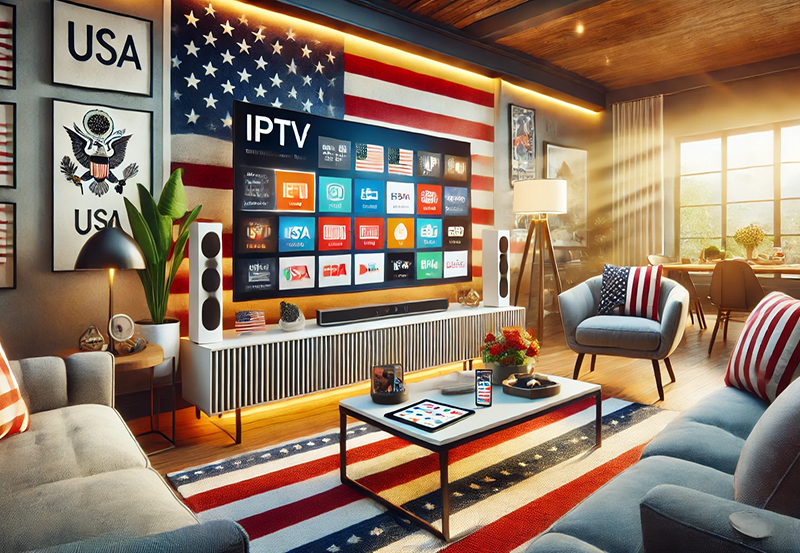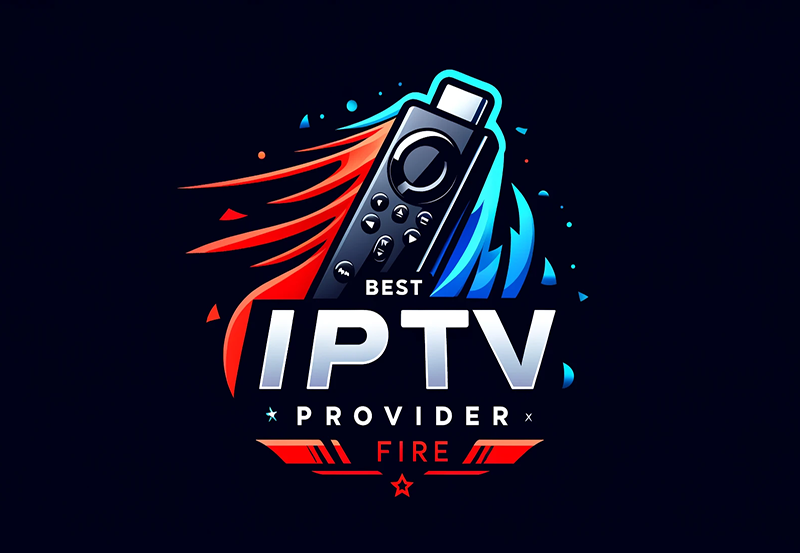In today’s fast-paced digital world, keeping track of our favorite shows, channels, and streaming schedules can often feel overwhelming. With the advent of Electronic Program Guides (EPGs), viewers have found a revolutionary tool that enhances their entertainment experience. But what exactly makes EPG such a game-changer? This article explores the intricacies of EPG, shedding light on how it seamlessly integrates with live TV streaming services like IPTV on Roku, ensuring a more delightful viewing journey.
Buy 1 Year IPTV Subscription and Enjoy Unlimited Content
Understanding EPG: A User’s Perspective
The Basics of EPG
Electronic Program Guides, or EPGs, are essentially navigational guides for digital television. They provide viewers with a comprehensive list of all the available programming, including timings, episode details, and even genres. Think of it as your TV guide on steroids—organized and at your fingertips.
EPGs serve as an on-screen menu, which is often synced with your TV or streaming device to display exactly what’s available on your subscribed channels. As technology advances, users now expect a smoother and more customized television experience—something EPGs deliver brilliantly.
How EPG Enhances Live TV Streaming
With the explosion of live TV streaming, the role of EPG becomes even more significant. Unlike cable TV, where flipping through channels might have sufficed, digital streaming demands a more organized approach to content surfing. EPGs offer just that—a structured directory that categorizes content based on user preferences.
For those using IPTV on Roku, the integration of EPGs ensures a navigable and hassle-free streaming experience. Whether it’s finding a live sports event, scheduling recordings, or discovering new shows, EPGs tie the user’s hands together in a way that feels intuitive and seamless.
The Expert’s Guide to IPTV Enjoyment with EPG
Harnessing the full potential of IPTV goes beyond merely subscribing to services; it involves understanding how tools like EPG enhance viewing pleasure. Here’s how you can optimize your IPTV experience:
- Ensure your device’s EPG settings are correctly set according to your time zone, so you don’t miss key broadcasts.
- Explore channels by genres or themes using the EPG search functionality for a personalized experience.
- Use EPG for scheduling future recordings, allowing you to watch your favorite shows at your convenience.
These steps clarify the user’s interaction with IPTV, making it a unique, tailored entertainment experience that traditional TV models can’t match.
The Technical Side of EPG Integration
Connectivity and Compatibility
For EPGs to operate effectively across different devices and platforms, compatibility is key. With the rise of various streaming gadgets, maintaining uniformity in EPG software is crucial. The integration process often involves syncing your smart TV or streaming device, such as a Roku, with the EPG provider’s data servers.
This synchronized setup ensures the EPG remains accurate and is constantly updated in real-time. Consequently, users receive an uninterruptible service that reflects the current broadcasting schedule.
Data Management in EPG Systems
Managing data within EPG systems is no simple task. It involves the constant retrieval and updating of information related to programs, channels, and broadcast schedules. Efficient EPGs use sophisticated data management systems to handle this seamlessly.
These systems focus on reducing data latency, ensuring that the displayed guide is contemporary and accurate. Such meticulous attention to detail enhances the user’s trust and reliance on EPG, making it an indispensable component of their viewing routine.
User Interaction and Experience
Personalization in EPGs
Perhaps the greatest benefit of modern EPGs is their ability to personalize the viewing experience. By analyzing patterns in user behavior, such as most-viewed channels or favorite genres, EPGs can suggest programs that align with the viewer’s taste. This tailored approach not only enriches the entertainment value but also elevates the user’s engagement with content.
The idea is to transform a passive TV session into one that’s interactive and joyous, making every viewing moment count.
Common User Feedback and Solutions
No system is without its flaws, and EPGs are no exception. Users often report issues such as lag, outdated information, or complicated navigation interfaces. These problems can significantly deter the user experience.
However, developers are actively working to support resolution to these issues by updating software frameworks and optimizing UI designs, ensuring that EPGs evolve alongside their users’ needs.
EPGs and the Future of TV Viewing
Trends in EPG Development
As AI and machine learning technologies advance, EPGs are expected to become even smarter. Trends indicate a move towards more predictive programming guides, where content is suggested based on both user habits and worldwide viewing trends.
This transformation promises a more immersive viewing experience, intending to keep viewers engaged and entertained in an intuitive manner.
EPGs in a World of OTT Services
The rise of over-the-top (OTT) services has introduced new challenges and opportunities for EPG developers. With a multitude of streaming options available, integrating EPGs across these platforms is essential to offer a cohesive user experience.
Going forward, the challenge will be to maintain consistency across diverse OTT services while enhancing cross-platform compatibility.
The Takeaway: EPGs as Game-Changers
Electronic Program Guides have undeniably changed the way we consume television content. By streamlining access to live IPTV streaming services like IPTV on Roku, EPGs deliver user-friendly navigation tools that innovate the traditional viewing model.
As we look to the future, the evolution of EPGs promises novel advancements, ensuring they remain central to our entertainment journey. Whether it’s through personalization, real-time updates, or predictive capabilities, EPGs continue to adapt, offering viewers an unparalleled experience.
Frequently Asked Questions

What is an Electronic Program Guide (EPG)?
An Electronic Program Guide (EPG) is a digital navigation tool that provides users with detailed information about broadcast schedules and programming. It is essential for seamless hassle-free media consumption in today’s digital age.
How does EPG enhance the IPTV experience on Roku?
By incorporating EPG, IPTV users on Roku can enjoy a structured viewing experience. EPGs offer program schedules, real-time updates, and genre-based recommendations, making content discovery and streaming smoother and more enjoyable.
Can EPGs work without an internet connection?
Generally, most EPGs require an internet connection for real-time updates and data synchronization. Offline functionalities may be limited and are not adequate for a comprehensive viewer experience.
What challenges do EPGs face in the OTT realm?
EPGs face the challenge of maintaining consistency and compatibility across various OTT services and devices. Data management, integration, and uniformity are ongoing areas of development for effective EPG deployment.
Are there costs associated with using EPGs?
Typically, EPG services are included in IPTV or streaming service subscriptions. Some advanced EPG features may require additional payments or premium subscriptions.
How do EPGs personalize viewing experiences?
EPGs personalize content by learning from viewer preferences and habits, suggesting programs and channels aligned with the user’s interests. This customization adds to user satisfaction and engagement.
What is the future of EPG technology?
The future of EPG technology looks promising with AI and machine learning. We anticipate more predictive features, enhanced personalization, and improved integration with emerging OTT platforms.
Boost IPTV Performance on Apple TV by Configuring Your Router





